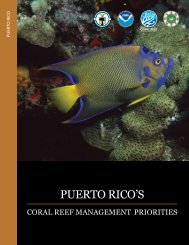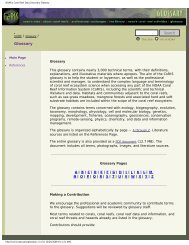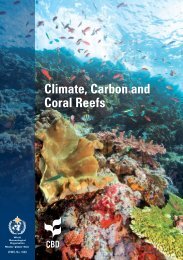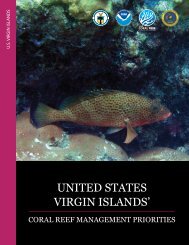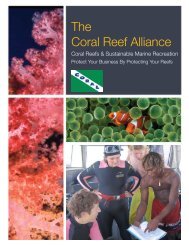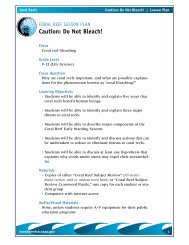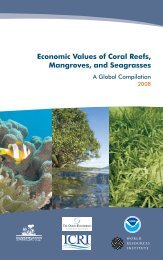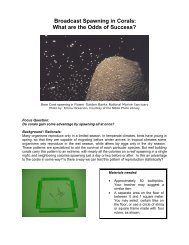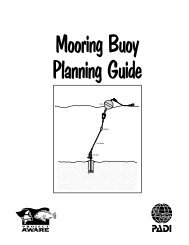Deep-Sea Coral Collection Protocols - NOAA's Coral Reef ...
Deep-Sea Coral Collection Protocols - NOAA's Coral Reef ...
Deep-Sea Coral Collection Protocols - NOAA's Coral Reef ...
- No tags were found...
You also want an ePaper? Increase the reach of your titles
YUMPU automatically turns print PDFs into web optimized ePapers that Google loves.
Video protocol (cont.)Video transect types 3 :Line (Strip) transect-Vertical line transects (Fig 21a) are best forrapid biological assessments of large features,such as seamounts. These start at the base ofthe feature, and almost guarantee dramaticchanges in environmental conditions.Vertical line transects can be repeated arounda feature. They also help discern verticalzonation patterns, and the results are readilyquantifiable.Grid Transect-Grid transects (Fig 21b) can be very timeconsuming, but they can also cover a largearea systematically. The results are readilyquantifiable. The length of the transects, andthe offset are usually predetermined.Grid transects may be oriented parallel toparticular isobaths, or perpendicular to thoseisobaths. This technique is very powerfulwhen combined with an opportunisticsampling methodology to verify videoidentifications.Radial transect-Radial transects (Fig 21c) start from anarbitrary or randomly selectedcenter. These are best for smaller features,or low relief mounds. A radial transect canhelp determine the limits of a particularcommunity when the size of that communityis unknown. All axes need not be the samelength.Fig. 21a-c. Video transect types253The analysis techniques described here are modified from those developed for theGreat Barrier <strong>Reef</strong> in Australia (after Osborne, K., and W. G. Oxley. 1997.)





